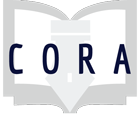How do you detmerine whether your research has had an impact? This lesson plan covers journal and author metrics such as Journal Impact Factors, H-index, citation counts, and altmetrics. After a mini-lecture of the definitions of these metrics and how to find them using Journal Citation Reports and Google Scholar Metrics, students create a researcher profile to position themselves as scholars.
Supplies needed: Printed researcher profile handouts.
This activity takes approxiately 30 minutes.

